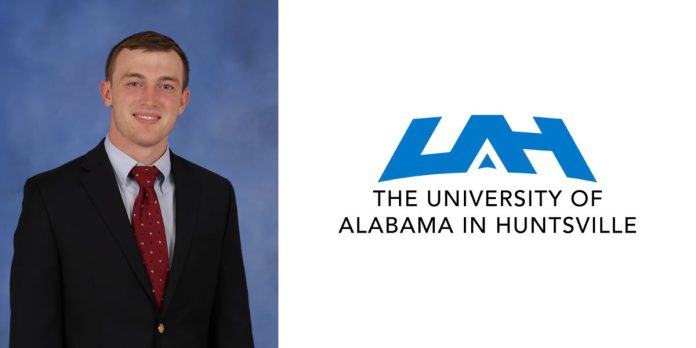HUNTSVILLE – Ian Wagner, a doctoral candidate of mechanical and aerospace engineering at the University of Alabama in Huntsville, has been selected to receive the United States Department of Energy (DOE) Office of Science Graduate Student Research (SCGSR) award.
The honor resulted from Wagner’s proposed research project to study plasma-jet driven magneto-inertial fusion, to be conducted at Los Alamos National Laboratory (LANL). The project seeks to advance plasma-jet magneto inertial fusion, or PJMIF, a key component to achieving breakeven fusion, which could one day lead to abundant clean energy.
PJMIF is one of several possible types of magneto-inertial fusion, where a magnetized plasma target is imploded by a material shell, called a liner. Magneto-inertial fusion (MIF) describes a class of fusion devices that use magnetic fields to confine an initial warm, low-density plasma, that it then compresses to fusion conditions.
Unlike solar and wind power, the energy produced by nuclear fusion is virtually limitless, and – rather than electricity generated by fission reactors, coal, oil or natural gas – requires no fossil fuels and leaves behind zero hazardous waste.
Wagner is advised by Dr. Gabe Xu, an associate professor of mechanical and aerospace engineering at UAH.
“As an undergraduate student, I studied aerospace engineering. I became fascinated with advanced concepts of deep space propulsion, including nuclear fusion propulsion,” Wagner said. “Currently at UAH I study laser-induced plasmas expanding within magnetic fields. Los Alamos National Laboratory is working to broaden the knowledge in magneto-inertial fusion. This research will help me in my research into laser-induced plasma interactions within magnetic fields.”
Getting to work with scientists at Los Alamos represents a golden opportunity for the graduate, not only to benefit from his experiences there, but also to help bring the science that much closer to realizing this long-held dream, while strengthening the bonds between UAH and the LANL.
“I hope to further the connections between UAH and LANL and support LANL’s research on the Plasma Liner Experiment (PLX) while learning new plasma diagnostic techniques,” Wagner said. “The main scope of my project will be to understand the plasma and magnetic field properties within PLX as well as how multiple plasma jets from the plasma guns on PLX interact and how their magnetic fields merge.
“This is important to understand how well the plasma is confined, as well as the burning time of the plasma within PLX, so that a better understanding of the physics involved in magneto-inertial fusion is achieved.”
In looking to the future of this research, the ultimate goal could not be clearer.
“I support Dr. Xu’s work in helping to understand the physics of fusion so that an abundant clean energy source can be obtained for humanity in the future,” Wagner said.
Don’t miss out! Subscribe to our email newsletter to have all our smart stories delivered to your inbox.



